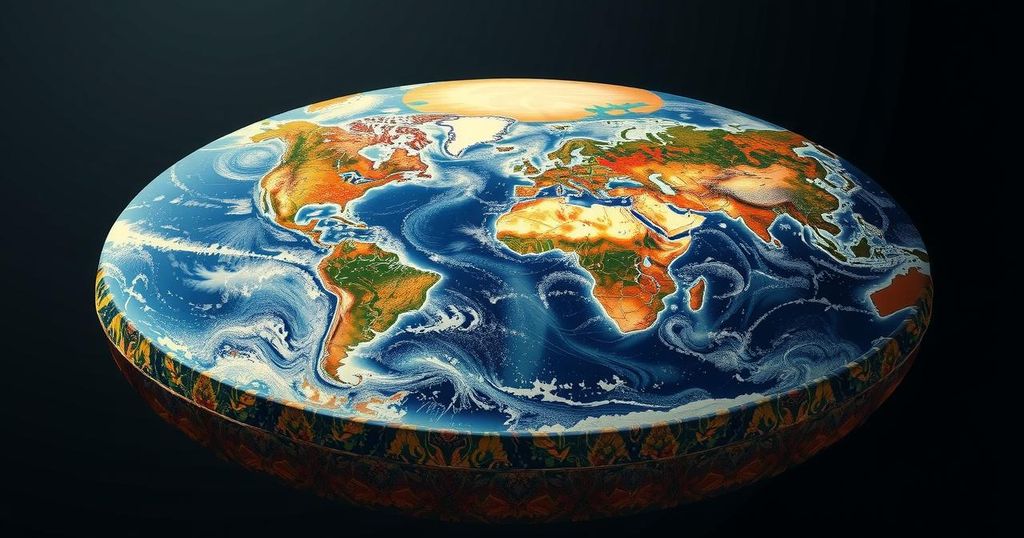Understanding Plate Tectonics: The Theory and Its Historical Development
The theory of plate tectonics explains the movement of Earth’s lithosphere and its effects, such as continental drift, subduction, and earthquakes. The idea was first proposed by Alfred Wegener, who provided evidence through similar sedimentary sequences found across continents. In subsequent decades, paleomagnetic studies and oceanographic research further validated the theory, leading to a comprehensive understanding of Earth’s geological activity.
Plate tectonics is a scientific theory explaining the movement and interactions of the Earth’s lithosphere, which is composed of tectonic plates. This theory encompasses several critical processes including continental drift, subduction, and the occurrence of earthquakes. Key historical figures such as Alfred Wegener, who first proposed the concept of continental drift, have been integral to the development of this theory. The evidence for plate tectonics includes similarities in sedimentary sequences across continents and the mapping of oceanic features like ridges and trenches.
In the early 20th century, Wegener identified striking similarities in Paleozoic sedimentary sequences across the southern continents and India, indicating a past connection between these regions. Such sequences, characterized by tillites, sandstones, and coal deposits, reflect climatic changes as Gondwana drifted south across the globe. By examining glacial deposits and the geological structures of these regions, scientists determined that Gondwana’s collision with Laurentia played a significant role in forming Pangea. Furthermore, advancements in isotopic dating and studies of Precambrian rocks revealed age correlations that supported Wegener’s hypothesis, affirming that these landmasses were once a unified entity.
The 1960s brought renewed scrutiny and acceptance of continental drift, particularly with advancements in paleomagnetism. This field analyzes ancient magnetic fields preserved in rocks, allowing scientists to trace the movement of continents over geological time. These studies demonstrated that the apparent wander of the magnetic poles could be attributed to continental drift rather than the movement of the poles themselves. This breakthrough, particularly the work of researchers like Stanley K. Runcorn, helped validate Wegener’s theory substantively.
Post-World War II advancements in oceanography, spearheaded by scientists such as Bruce C. Heezen and Marie Tharp, revealed diverse features of ocean basins, including oceanic ridges, trenches, and transform faults. Detailed mapping revealed that ocean ridges rise significantly above the seafloor and are associated with high volcanic activity, while trenches often indicate subduction zones with associated seismic activity. These findings were pivotal in forming a comprehensive understanding of plate tectonics.
In summary, plate tectonics provides a unified explanation for various geological phenomena observed across the globe, illustrating the dynamic nature of Earth’s crust. The historical development of this theory is marked by the contributions of early pioneers like Wegener and later validations through geophysical studies. The implications of plate tectonics extend to understanding earthquakes, volcanic activity, and the historical positioning of continents.
Scientific consensus now robustly supports the theory of plate tectonics, integrating multiple lines of evidence from diverse disciplines to explain the complex geological processes that shape our planet. The collaborative effort of the scientific community remains essential in advancing our comprehension of Earth’s geological history and tectonic behavior.
Plate tectonics is a fundamental scientific theory that explains the movement and interaction of the Earth’s lithosphere through concepts such as continental drift and subduction. The theory arose in part due to the historical observations of similar geological and paleontological evidence across currently separate continents, leading to the hypothesis that they were once joined as a single landmass. The continuity of geological features and paleoclimate records bolster the evidence for this theory, while advances in geophysical research have further refined understanding of the processes involved. The study of plate tectonics has significant implications in geology, particularly regarding the mechanisms behind earthquakes and volcanic activity.
In conclusion, the theory of plate tectonics presents a comprehensive framework for understanding the geological features of Earth and the dynamic processes that govern its form. The contributions of pioneering scientists such as Alfred Wegener have been instrumental in shaping this paradigm, further supported by advancements in paleomagnetic studies and oceanographic research. Today, the scientific community recognizes plate tectonics as essential for explaining continental distributions, seismic activity, and the historical geological evolution of our planet.
Original Source: www.britannica.com




Post Comment